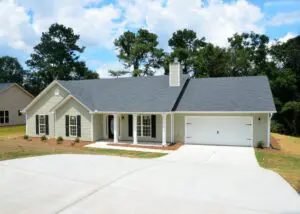
Average Roof Replacement Cost: A Comprehensive Buyer’s Guide
When it comes to home maintenance, replacing a roof is one of the largest expenditures a homeowner can face. The cost of a roof replacement can vary widely depending on a number of factors, including the size of your house, the roofing materials you choose, and even the region where you live. In this comprehensive guide, we’ll delve into the various aspects that influence the cost of roof replacement, offering insights into what you can expect to spend on different roofing materials, house sizes, and the breakdown of labor versus material costs.
Understanding Roof Replacement Costs
Roof replacement involves not just the removal of your old roofing materials but also the installation of new shingles, underlayment, and sometimes even structural repairs. Before we explore the costs associated with different materials and house sizes, it’s essential to understand the basic components that contribute to the overall expense.
Factors Affecting Roof Replacement Cost
- Size of the Roof: The bigger your roof, the more materials and labor will be required, increasing the cost.
- Roofing Material: Options range from asphalt shingles to metal, slate, and more, each with varying prices.
- Labor Costs: These can vary by region and contractor expertise.
- Roof Complexity: A roof with multiple slopes, valleys, and features like chimneys can increase the cost due to the additional labor and materials required.
- Geographical Location: Costs can be higher in areas with higher living costs or where roofing materials are less readily available.
- Removal of Old Roofing: The process of tearing off the old roof can add to the overall cost, especially if there are multiple layers of roofing to remove.
Roofing Material Costs
One of the most significant factors in determining the cost of your roof replacement is the material you choose. Here’s a breakdown of popular roofing materials and their average costs.
Asphalt Shingles
- Cost: $3.50 to $5.50 per square foot installed.
- Lifespan: 15 to 30 years.
- Pros: Cost-effective, widely available, and comes in various colors and styles.
- Cons: Shorter lifespan compared to other materials.
Metal Roofing
- Cost: $7 to $14 per square foot installed.
- Lifespan: 40 to 70 years.
- Pros: Durable, energy-efficient, and offers a sleek appearance.
- Cons: Higher initial cost and requires specialized installation.
Slate Roofing
- Cost: $15 to $25 per square foot installed.
- Lifespan: 100+ years.
- Pros: Incredibly durable, fire-resistant, and offers a natural look.
- Cons: Very heavy, requiring additional structural support, and expensive.

Tile Roofing
- Cost: $7 to $18 per square foot installed.
- Lifespan: 50 to 100 years.
- Pros: Durable, low maintenance, and offers unique aesthetic options.
- Cons: Heavy and requires reinforced roof framing.
Cost by House Size
The overall cost of a roof replacement is also heavily influenced by the size of your home.
- Small Homes (up to 1,500 sq ft): The cost can range from $5,250 to $8,250 for asphalt shingles and can go significantly higher for premium materials.
- Average-Sized Homes (1,500 – 2,500 sq ft): Asphalt shingle roofing can cost between $8,750 and $13,750, with costs varying greatly for other materials.
- Large Homes (over 2,500 sq ft): The costs start at $14,000 for asphalt shingles and increase substantially for materials like metal, slate, or tile.
Labor vs. Material Costs
When budgeting for a roof replacement, it’s crucial to understand the split between labor and material costs. Typically, materials account for 40% of the total cost, while labor makes up the remaining 60%. This ratio can fluctuate based on the complexity of the job and the type of materials used.
Additional Costs to Consider
Beyond the basic costs of materials and labor, there are several other expenses that can impact your final bill:
- Permits: Depending on where you live, you may need a permit to replace your roof, which can add to the cost.
- Structural Repairs: If your roof has suffered damage or decay, you may need structural repairs before installing the new roof.
- Gutter Replacement: If your gutters are old or damaged, it might be cost-effective to replace them during the roof replacement.
Replacing your roof is a significant investment that can vary widely in cost based on several factors, including the size of your roof, the materials you choose, and where you live. By understanding these factors and planning accordingly, you can ensure that you make the best decision for your home and budget. Remember, investing in a high-quality roof replacement can protect your home for decades, making it a worthwhile expense for the long-term health and safety of your residence.




Leave a Reply